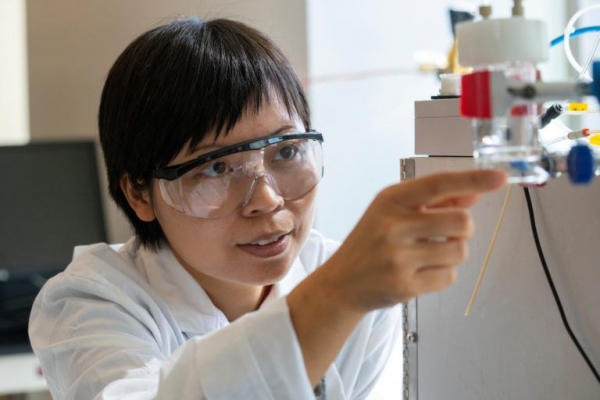The new method could be used to cut greenhouse gas emissions and reduce reliance on nondegradable plastics.
A team of Texas A&M AgriLife Research scientists has developed a system that uses carbon dioxide to produce biodegradable plastics, or bioplastics, that could replace the nondegradable plastics used today. The research addresses two challenges: the accumulation of nondegradable plastics and the remediation of greenhouse gas emissions.
Published Sept. 28 in Chem, the research was a collaboration of Susie Dai, associate professor in the Texas A&M Department of Plant Pathology and Microbiology, and Joshua Yuan, formerly with the Texas A&M Department of Plant Pathology and Microbiology as chair for synthetic biology and renewable products and now Lopata professor and chair in the Washington University in St. Louis Department of Energy, Environmental and Chemical Engineering.
The research was made possible by the John ’90 and Sally ’92 Hood Fund for Sustainability and Renewable Products, Texas A&M AgriLife and Texas A&M University. Dai said today’s petroleum-based plastics do not degrade easily and create a massive issue in the ecosystems and, ultimately, oceans.
To address these issues, the Texas A&M College of Agriculture and Life Sciences researchers and their teams worked for almost two years to develop an integrated system that uses CO2 as a feedstock for bacteria to grow in a nutrient solution and produce bioplastics. Peng Zhang, Ph.D., postdoctoral research associate, and Kainan Chen, doctoral student, both in the Texas A&M Department of Plant Pathology and Microbiology, contributed to the work. The Texas A&M University System has filed a patent application for the integrated system.
Continue reading at Texas A&M University
Image via Texas A&M University






